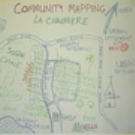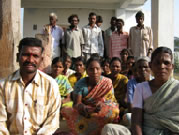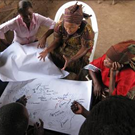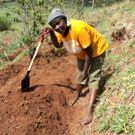STUDENT RESOURCE PAGE
OL 345: Community Based DRR Training.
Community Based Disaster Risk Reduction Online Course.
This OL 345 Student Resource Page has three sections that can easily be reached by clicking on the red links just below.
Read the Class Homepage First.
- Download Documents. This is where you can download Word, Excel and PDF documents that can save as course resources for future projects and use as templates for the assignments.
- The Course Website. Webpage versions of the discussions and assignments for each week.
- Read this first: The Class Home Page. This gives you an overview of the course and also sets up the course logistics.
Download Course Documents
OL 345: Climate Smart Agriculture
General Documents
Course Participant List
Week One
OL 345 Assignment One Homework PDF 35K
OL 345 Assignment One Discussion PDF 35K
Magee Example Project OL 345 Assignment 1 Word Document to 35K
Field Guide: Knowledge Transfer—Developing Field Guides, Lesson Plans, and Workshops
Field Guide: Participatory Capacity and Vulnerability Assessment
Workshop Lesson Plan Template: Participatory Capacity and Vulnerability Assessment
How to Card: Participatory Capacity and Vulnerability Assessment
CARE. Climate Vulnerability and Capacity Analysis Handbook. CARE.
IFAD. Good Practices in Participatory Mapping, IFAD.
IIED. Participatory Learning and Action 54: Mapping for change: practice, technologies and communication, IIED.
Week Two
OL 345 Assignment Two Homework PDF 35K
OL 345 Assignment Two Discussion PDF 35K
Magee Example Project OL 345 Assignment 2 Word Document 35K
Week Three
OL 345 Assignment Three Homework PDF 35K
OL 345 Assignment Three Discussion PDF 35K
Magee Example Project OL 345 Assignment 3 Word Document 35K
OL 345 Lesson Plan – Forming a Community DRR Committee
Week Four
OL 345 Assignment Four Homework PDF 35K
OL 345 Assignment 4 Discussion PDF 35K
Magee Example Project OL 345 Assignment 4 Word Document 35K
Field Guide & Lesson Plan A4: Developing a Community Based Disaster Risk Reduction Plan
Week Five
OL 345 Assignment Five Homework PDF 35K
OL 345 Assignment Five Discussion PDF 35K
Magee Example Project OL 345 Assignment 5 Word Document 35K
Week Six
OL 345 Assignment Six Homework PDF 35K
OL 345 Assignment Six Discussion PDF 35K
Magee Example Project OL 345 Assignment 6 Word Document 36K
Field Guide and Lesson Plan A6 Developing a Community Based Disaster Risk Reduction Plan
Week Seven
OL 345 Assignment Seven Homework PDF 35K
OL 345 Assignment Seven Discussion PDF 35K
Magee Example Project OL 345 Assignment 7 Word Document 36K
OL 345 Lesson Plan A7—Introducing Flood Evacuation To Community Members
Field Guide: Knowledge Transfer — Developing Field Guides, Lesson Plans, and Workshops
Week Eight
OL 345 Assignment Eight Homework PDF 35K
OL 345 Assignment Eight Discussion PDF 35K
Magee Example Project OL 345 Assignment 8 Word Document 36K
Webpages with Weekly Course Discussions and Assignments
OL 345 Class Home Page
Welcome to Online Learning: OL 345 Community Based DRR Training
The Course
Welcome to the Center for Sustainable Development’s online learning course OL 345 Community Based DRR Training. In this course you will assess highly specific challenges that your communities face related to DRR challenges. In this course we will not be trying to change your original project — but simply zeroing in on a more specific definition of the challenge.
We will then begin researching solutions for the challenge which are perhaps also more specifically defined than your original activities in your outline. We will conclude the course with a your a capacity building workshop using one of these your more highly refined activities to address one of your communities challenges.
Logistics
Be sure to read E-Mail and Homework Etiquette
You have signed up for a specific course within specific dates. If you are not able to complete the course within these dates, the Center allows you to take the course again for 50% of the normal course fee if you enroll in the very next scheduled course and use the very same project. Unfortunately, we can’t make exceptions.
Please feel free to review E-Mail and Homework Etiquette in the Download Class Documents as a refresher. Course participants who successfully complete a course on time will receive a course certificate.
OL 345 Course Syllabus: Developing a Disaster Management Project.
| Week 1. | Local Context |
 |
Conducting a participatory capacity and vulnerability analysis. In OL 343 you conducted a participatory capacity and vulnerability analysis as part of developing your project. If it was focused on DRR you can move onto Assignment 3. If your assessment was on a different theme than DRR, you can use the same workshop resources and focus a second assessment on hazards and disasters. Examples could be floods or extreme weather events such as hurricanes. In week one you will develop the workshop lesson plans and arrange for the meeting where everyone in the community can better understand how disasters can impact their village. |
| Week 2. | Local Knowledge |
 |
Leading a participatory capacity and vulnerability analysis workshop. This week you will be facilitating the participatory workshop with the community to assess their disaster related risks, hazards, vulnerabilities and capacities. You will achieve this through a seasonal calendar exercise, a hazard mapping exercise, a timeline exercise, and a summary of hazard impacts on lives and assets. After completing the assessment you will work with the community to prioritize the most important hazards, to pinpoint specific solutions—and to determine community capacity for implementing the solutions. |
| Week 3. | Sustainable Management |
 |
DRR Overview: Setting up a CBDRR subcommittee. In week 8 of OL 343 you set up a community based project management committee. You can use the same technique to set up a Community Based DRR subcommittee. This subcommittee will be able to work with your NGO to create long-term associations with government agencies that can support long-term DRR activities. The subcommittee will be in charge of developing a DRR plan, and for coordinating disaster teams. Setting up a subcommittee is a much more rapid process than setting up a full committee. We will also explore an overview of common DRR activities. |
| Week 4. | Survey of Activities for use Before Disasters Strike |
 |
Preparedness for Disaster: Early warning systems. Traditionally, community members have not had warning of when they need to evacuate—and frequently they have left it too late. Your government’s meteorological office may have the capability of, for example, in a potential flood situation, evaluating when water has reached a critical height and can announce that a flood is imminent. Communities should form partnerships with these offices and ensure that they have clear access to early warning information in case of disaster. |
| Week 5. | Survey of Activities for use During Disasters |
 |
Evacuation DRR Training. If people need to evacuate, they need to know when to evacuate, they need to know what to do with their valuable possessions and assets, they need to know where to go where it’s safe, they need to know what to take with them, and they need to know what to do when they get to shelter. Capacity building workshops led by the evacuation team can train community members in each of these—and most importantly—can lead them in practice drills. |
Search and Rescue DRR Training. Search and rescue team members learn specific techniques that are safe, and are given simple tools such as life-jackets, safe boats, inner tubes, and flashlights which give them the confidence and the capability to look for a missing person or of rescue a trapped elderly or disabled person.
| Week 6. | |
 |
Developing a DRR plan. Developing a DRR plan may include each of the activities in the surveys above—and maintaining them in perpetuity. This will involve a plan for consciousness-raising among community members about DRR challenges, connecting with an early warning system, organizing teams, DRR training teams in evacuation and search and rescue, and prioritizing mitigation strategies. The plan can include an advocacy campaign for obtaining government support. |
|
Community Engagement. Frequently community members don’t have a clear picture of how and why disasters happen. They also may not know how to react when a disaster is building or is already in progress. Workshops and simple posters or how-to cards need to be developed to help them understand these concepts and to learn that there are things that they can do to reduce the risk caused by disasters, and to mitigate the severity of the disasters. |
|
|
Organizing Teams. Based upon the results of your community’s participatory capacity and vulnerability assessment, you should now have a prioritized list of hazards and disasters. As part of the DRR plan the committee will prioritize preparedness activities, risk reduction activities and mitigation activities. Teams should be organized for each of the major priorities. If, for example, the type of disaster your community faces necessitates evacuation, an evacuation team should be established that develops a plan to lead an evacuation at the appropriate time—and then lead an actual evacuation if necessary. |
|
| Week 7. | Mitigation Capacity Building Needs & Workshop Planning |
 |
Evaluate the results of participatory mapping of disaster risks and hazards—and then select an appropriate disaster risk mitigation technique specifically for community members to learn to implement. Develop an overview for committee members of disaster risk mitigation techniques that could include reforestation of watersheds, gully plugging, secure food storage and a savings plan. Make an appointment to propose appropriate techniques to the DRR Management Committee for feedback. |
|
Workshop Planning. Prioritize which DRR technique should be introduced in the first workshop. Contact a DRR expert of feedback and input. Develop a workshop lesson plan. Draw a how-to card. Arrange the date and location for the workshop with your community contact person. Arrange for supplies and tools for the workshop with your community contact person. |
|
| Week 8. | Capacity Building |
 |
Capacity building for disaster risk reduction and mitigation activities for community members. There are many activities that can be done to mitigate potential disasters. Some, like mangrove plantings along river banks can reduce erosion during a flood season. The reforestation of a watershed can reduce danger from flash floods. Both are activities that communities can do over the span of time. Capacity building workshops give community members the skill sets that they need to do these activities. Other activities like relocating houses to higher ground may be outside of their purchasing power, but committee members can be trained to develop advocacy campaigns for approaching governments for support in more major investments. |
So what’s next? Click on the Assignment One Discussion and get started in diaster risk reduction!
I hope you enjoy the course — I’m very much looking forward to working with you.
Sincerely,
Tim Magee
